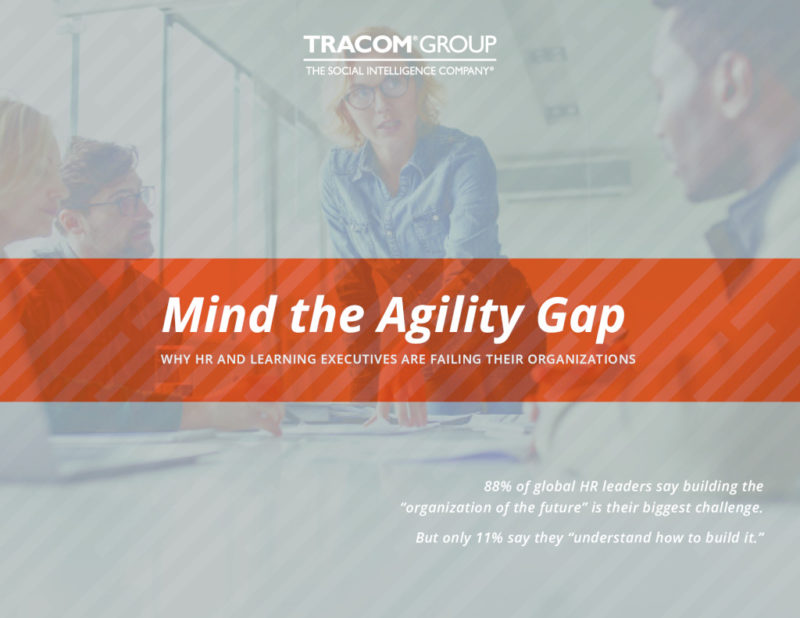This whitepaper is a warning to HR and learning executives of the potentially dangerous gap between what organizations must do to achieve long-term success and the current lack of HR focus on developing agility across the organization.
What Agility Is
Agility is defined in two variables — Personal Agility and Organizational Agility.
Personal Agility is an individual adopting a flexible mindset that promotes the generation and implementation of original and useful ideas.
Organizational Agility is the capacity to recognize, create and exploit opportunities in a changing environment.
Agile companies foster innovation and evolve more successfully than their competitors by capitalizing on opportunities emerging around them. But becoming an agile company requires having agile people throughout the organization.
What Agility Isn’t
Agility is sometimes confused with things such as Design Thinking, Learning Agility, Agile Process Development or even broad Innovation methods. While some of these concepts overlap or support more intentional approaches to solving problems, they are not sufficient to create Organizational Agility. Why? Becuase they don’t provide specific strategies that are actionable and relevant across an entire company. They also lack the essential brain science to affect behavioral change among employees. Agility is both a mindset (the way we think) and a way of behaving (act/react) that, combined, help people change and adapt to shifting circumstances AND work to implement changes more readily.
The Role of L&D Professionals
Research shows that agility can be learned. But, it’s not as simple as telling people to “think outside the box.” In fact, such clichés are useless and often backfire since they lead people to believe that there is some magical ability that they don’t possess.
“We want employees to be part of our change and to act like an owner. Agility will allow us to best serve customers.” – Senior L&D Officer, Packaged Food Company
Instead, to become agile, people need to recognize that everyone has the ability to be creative and to see good ideas through to fruition. It is simply a matter of having the right tools and processes in place, which allows people to change their behavior and mindsets. Shifting people’s thinking about innovation and how to achieve it is crucial for creating an agile culture.
Next Steps
CLOs and Chief HR Officers have moved into the executive suite to combine strategic vision and solid execution. While research shows a significant disconnect between those two responsibilities, it’s possible to close the gap with training. Learning executives must lead the way in delivering the agility capabilities that they already recognize as crucial to their futures.
To learn more about Agility and the courses TRACOM offers, click here.

 New Horizons
New Horizons
 Project Management Academy
Project Management Academy
 Six Sigma Online
Six Sigma Online
 TCM Security
TCM Security
 TRACOM
TRACOM
 Velopi
Velopi
 Watermark Learning
Watermark Learning
 Login
Login

